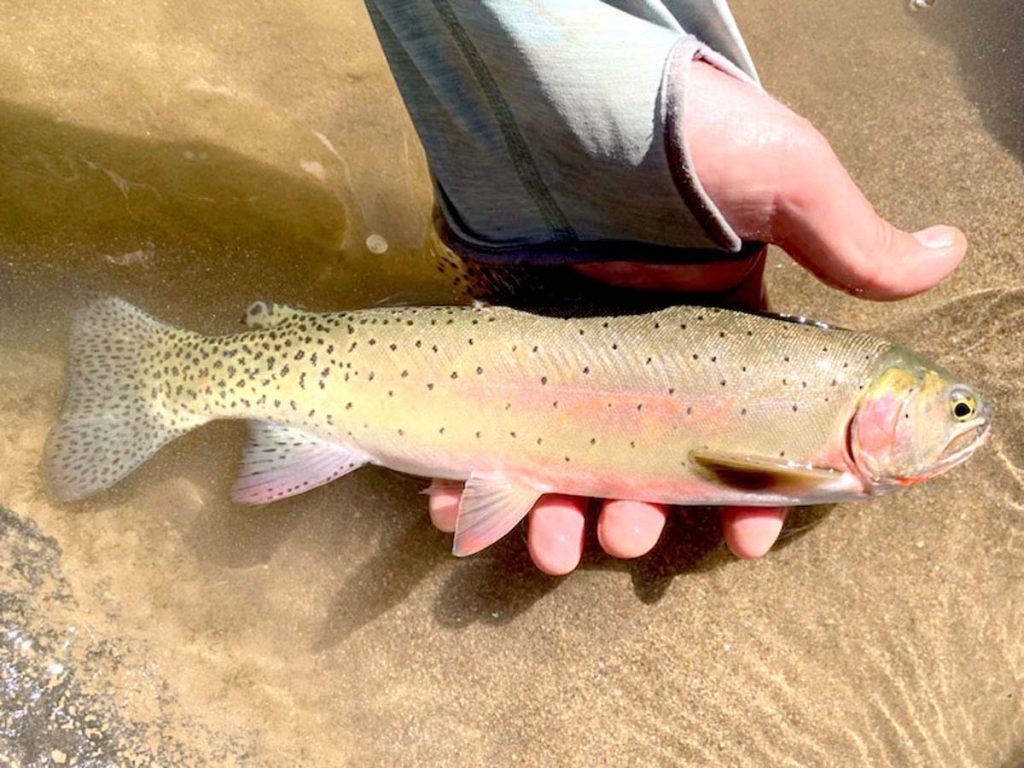Autumn can be a pretty rough time for a New Mexican fisherman like me. In the north, pretty much every day in late September through October is sunny and blue, which makes every other color jump out. It’s like the sun and the plants have conspired to play my heartstrings with the perfect mix of optimistic joy and melancholy. I have difficulty with fall because I always forget that the season doesn’t last forever, and the fact that the actual point of it is that it will end.

There’s a lot of ritual around autumn in New Mexico, like the Balloon Fiesta, apple and berry picking, and going on walks through yellow aspen groves with people we love. My personal favorite ritual is fishing the Rio Grande. I usually try to hike into the gorge, mainly because the fishing is so good at this time of year.
That is if you time it right, which I didn’t this year. My buddy Stucky and I were a couple weeks late. The nights had turned cold, so the fish didn’t warm up until the middle of the afternoon. We didn’t catch a lot of fish but were grateful for the generosity of a few.
We hiked in from the La Vista Verde Trailhead, up the hill from the Taos Junction Bridge near Pilar. The maintained trail goes along the western rim, with several DIY paths breaking off to the right heading into the crack. You don’t realize until you reach the riverside that those paths are made by bighorns, and that sheep are built for traveling in that boulder and landslidy terrain, and you’re not.
As if to emphasize this point, a gang of five very robust rams ambled up to the opposite bank as soon as we stepped into the Rio. It wasn’t clear which ram was the big boss. Each had a full curl on his horns, and they moved together amicably, ripping mouthfuls of grass and nibbling at sagebrush. The fact that the group was all males suggested that any major head-butting was finished for the year. They seemed so relaxed. And fat.
Unlike other spots in the gorge, that stretch of channel is too narrow to allow a safe crossing, which was too bad, because (as always seems the case with fishing) the fishiest water was on the other bank. Such hair-splitting comes naturally, especially when you’re not catching as many fish as you think you should be.
My excuse: the gorgeousness of the day — the reds and the yellows, the smell of sage and the royal blue sky, had raised our expectations to a point where reaching them would have been impossible. It wasn’t like the fish weren’t biting. We each caught a few browns and rainbows on different flies, big and small, which indicated that the fish weren’t picky.
They were just deep. In such swirly currents that the Rio is known for, achieving a natural drift isn’t easy. You have to adjust your weight and tippet constantly and try to keep your leader straight. No doubt we had strikes when our leaders were too slack, and being distracted by bighorn rams and the beauty — the pleasant warmth of the sun and the challenge of moving among the boulders without falling on our faces or into the river — didn’t help.
One of my fish was a Rio Grande cutthroat. It was about a foot long, meaning that it was a survivor from one of the stocking events at the Big Arsenic campground near Questa. Not from this year’s event; those fingerlings wouldn’t have grown so big in the few months since we stocked them this spring. This fish would have been stocked in 2019, or some time before the pandemic caused the suspension in cutthroat stockings.
My cutthroat had survived predation from browns, rainbows, northern pike, crayfish, otters, and fishermen. It had grown to adulthood, traveling more than 20 miles of canyon, through high water and low. Just to eat my fly and make my day.




